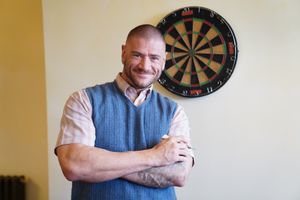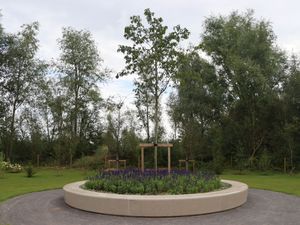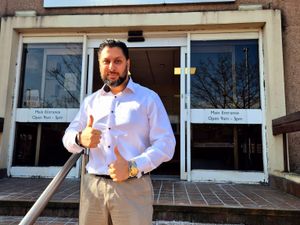New exhibit aims to teach visitors about issues faced by deaf people
A new exhibit at the Black Country Living Museum aims to teach visitors during half term about the historical issues faced by deaf people.
Watch more of our videos on ShotsTV.com
and on Freeview 262 or Freely 565
Visitors to the museum in Dudley will meet ‘David Smith’ during May half term, a new historic character informed by and representing real people’s memories who will share the importance of the Deaf community and how Deaf clubs flourished during the 1960s, as well as the barriers in society that Deaf people have historically faced.
David has been developed as part of Curating for Change, which is funded by National Lottery Heritage Fund and is a ground-breaking project delivered by Screen South through the Accentuate Programme to create strong career pathways for Deaf, disabled and neurodivergent curators, who are currently under-represented in museums.
Visitors will find out more about David’s life in the Black Country in the 1960s and the controversial ‘oral method’, as well as his childhood memories of growing up Deaf in 1960s Black Country.
In the 1960s, the education of Deaf children was still deeply entrenched in oralism, stemming from decisions made at the Milan Conference in 1880.
This conference, led by predominantly hearing people, advocated for ‘The Oral Method’ as the primary mode of education for Deaf children, believing that to be speaking and hearing was superior.
Deaf children were made to conform to the hearing world, forcing them to lip read and speak and denying them access to sign language and sometimes even physically restraining them from using their language.
David will be portrayed by Deaf actors and use a combination of British Sign Language (BSL) and ‘home signs’ to communicate with a hearing family member, who will be played by interpreters from Birmingham-based TheSignLife.

The informal communication referred to as ‘home signs’ demonstrates the ways in which Deaf and hearing people have historically found to communicate at home and work.
Robert Buckley, who will be one of the Deaf actors portraying David, said: “It’s a good opportunity to raise awareness of what life was life for Deaf people in the past, and sometimes, even now.
"I remember working among hearing colleagues, and I asked why nobody would talk to me.
"The reply was: ‘I thought Deaf people preferred the quiet’.
“The Deaf community is full, rich and diverse, and it’s OK to strike up a conversation with us.
"It means a lot to illustrate this to the public, as normally it’s the Deaf person’s responsibility to make the first move, which can be hard work.”
Jozey Gray, public programme producer at the Black Country Living Museum, shared how they hoped David will interact with visitors
She said: “We’re thrilled to be able to bring to life the rich stories that the co-creation group shared with us.
"Shaped by the work of our Curating for Change Fellows, David represents an amalgamation of experiences from all the Deaf people who have worked with us.
"He’ll be challenging our visitors to a game of dominoes and sharing what how vital Deaf Clubs were in the 1960s, lifelines for the Deaf community that nurtured social and support networks within the Deaf community at this time.”
Nina Thomas, a deaf artist and curator, was one of the Museum’s Curating for Change Fellows who led this project and developed David in collaboration with a co-production group.
She said: “Working with the co-production group and TheSignLife to develop this character, I felt part of a wonderful Deaf community with a deep, vibrant and complex history.
"We discussed making the character reflective of our lived experiences as Deaf people.
"We shared experiences of exclusion and isolation in a hearing world.
“For the character David, we aimed to show how Deaf and hearing people found ways to communicate using ‘home signs’ and highlight how Deaf sport and Deaf clubs were really flourishing in the Black Country in the 1960s.
“Our hope is to share a social model rather than medical model, and the many ways hearing people have been allies, while also highlighting historic barriers Deaf people have faced.
"We feel this is as important today as it was in 1960s.
“We want the audience to learn how Deafness is not something to be cured or fixed, but a diverse multi-layered experience and an important part of the Black Country’s cultural history.”
Chloe Taylor, museum collections manager, explained the importance of the creation of this character.
She said: “Our Curating for Change Fellows have been re-examining and exploring the Museum’s collections through a new lens, uncovering stories of disabled people through objects in our collections that have perhaps been hidden or overlooked due to lack of information.
“With the support of the Museum, the Fellows have recruited a co-production group and conducted workshops to capture the lived experiences of people that are Deaf, disabled and neurodivergent in the Black Country, helping us to develop ideas on how we can represent and share these stories authentically at the Museum.”
Pearl Clinton, director of TheSignLife and a BSL interpreter, has lived experience as a CODA (Child of Deaf Adults).
He said: “This has been such an exciting project to be part of.
"I’m proud that TheSignLife can be a part of it and can support BCLM spread the awareness and represent the Deaf community of Birmingham and the Black Country.”
Esther Fox, head of the Accentuate programme at Screen South, said: “It is entirely because our Fellows and Trainees have the lived experience of being Deaf, disabled and neurodivergent that they have been able to bring fresh perspectives to museums and share stories that have previously not been known.
"These rich stories and experiences help local communities to understand more about local Deaf and disabled people from the past, building connections between people.”





